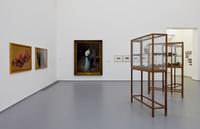Collection of the Kunstmuseen Krefeld
The Beginnings
The foundation for the Kunstmuseen Krefeld was laid in 1897 with the opening of the Kaiser Wilhelm Museum.
Very much in the spirit of the Reform Movement around the turn of 20th century, the museum’s founding director Friedrich Deneken promoted the ties between art and everyday culture. The Kaiser Wilhelm Museum soon established itself as one of the most progressive institutions of its kind in Germany, becoming an influential stylistic hub between the fine and applied arts, between design and everyday life, between trade and citizenry. Deneken assembled an extensive collection of applied art that from the outset was supplemented by paintings and sculpture. The foundation of the older collection is formed by numerous gifts and donations assembled during time around the museum’s founding. These included works from the holdings of the former Museumsverein, which not only assembled examples of handicrafts from the possession of its members for the new museum since it was founded in 1883 but also diverse paintings from the 16th to 19th centuries. Individual donations and the purchases of various private collections similarly supplemented the museum’s holdings, for example the Oetker Collection featuring the Adoration by Aertgen van Leyden (1536) or the Kramer Collection with Lower Rhenish medieval sculpture. A further emphasis is 19th century painting with works by Franz von Lenbach, Johann Wilhelm Schirmer, Hans Thoma, Adolf Höninghaus and various artists of the Düsseldorf School of Painting, including the famous The Schadow Circle, a collaborative work by five painters made in Rome in 1830.
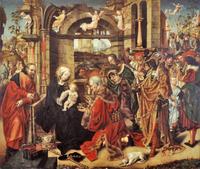
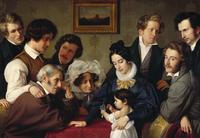

Classic Modern Art
In 1900, the marble sculpture Eve by Auguste Rodin became the first major acquisition for the collection in the field of modern art.
The Houses of Parliament in London (1904) by Claude Monet followed in 1907. Under director Max Creutz, the museum grew in the 1920s as a venue for the fine arts with a pronounced focus on modernism. During the time of the National Socialist regime, the collection of modern art was torn apart by confiscations in conjunction with the “Degenerate Art” action of 1937. Only several works remained by chance in the museum or returned after the war, for example Heinrich Campendonk’s Pierrot with Sunflower (1925) and Emil Nolde’s painting Milking Cows (1913). Several gaps in the collection could be closed thanks to new acquisitions after 1945. Aside from important individual pieces, the collection now encompasses a group of works by the German Impressionists Max Slevogt, Lovis Corinth and Max Liebermann. Expressionism is represented with paintings by Karl Schmidt-Rottluff, Ernst Ludwig Kirchner and Erich Heckel, works by members of the ‘Blauer Reiter’ group like Wassily Kandinsky, Alexej von Jawlensky in addition to a complete ensemble of works by the Krefeld-born painter Heinrich Campendonk. A further highlight is the group of Constructivist works by Piet Mondrian, Theo van Doesburg and László Moholy-Nagy. Since 2018, the Kunstmuseen Krefeld possesses the most extensive collection of original works by Sonia Delaunay in Germany.
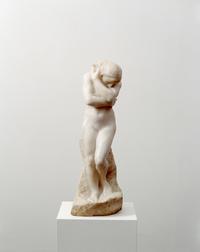
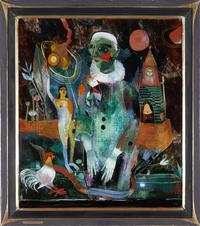
Pierrot with snake, 1923
Kunstmuseen Krefeld
© VG Bild-Kunst, Bonn 2019
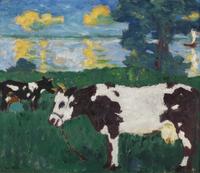
After 1945
After the end of the Second World War, a time of upheaval and new beginning, the museum opened itself up to the then current tendencies of abstract painting, Nouveau Realisme, Arte Povera, ZERO and Kinetic Art.
Haus Lange has been used by the Kunstmuseen Krefeld as a venue for the exhibition of contemporary art since 1955, Haus Esters since 1981. The Krefeld museums first attracted international attention with two exciting presentations: Jean Tinguely’s mechanical contraptions clattered and stomped in the spaces of Haus Lange in 1960 and a year later, in 1961, Yves Klein presented an initial survey of his then still young oeuvre in his first museum exhibition. The museum’s program and collection were enriched around the mid 1960s by icons of American Pop Art like Robert Rauschenberg, Robert Indiana and Andy Warhol.
In 1969, the now legendary touring exhibition When Attitudes Become Form, curated by Harald Szeemann, stopped at Krefeld. At that time, such recent trends such as Minimalism, Conceptual Art and Land Art became the focus of interest. In the 1970s, the architects’ collective Haus Rucker Co and young artists such as Hans Haacke, Christo and Claes Oldenburg presented spectacular exhibitions in the two villas.
In the 1980s and 1990s, focus was placed on European artists, especially graduates of the Düsseldorf academy. Sculptures by artists such as Katharina Fritsch, Thomas Schütte, Franz Erhard Walther and Reinhard Mucha as well as paintings by Gerhard Richter and Sigmar Polke were accordingly acquired for the collection. The Kunstmuseen Krefeld still continues to acquire examples of international contemporary art ranging from Allora & Calzadilla, Allan Uglow and Elmgreen & Dragset to Jasmina Cibic and Christian Falsnaes.
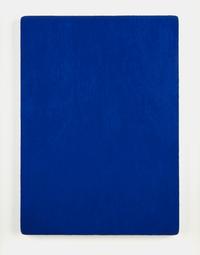
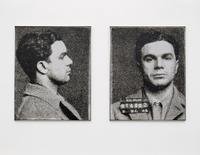
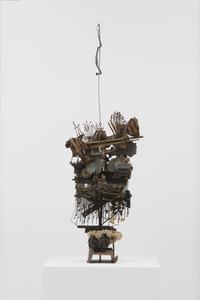
Photography & New Media
Photography established itself as an autonomous art form in the 1980s.
It is due to the proximity to Düsseldorf, where Bernd and Hilla Becher headed the first class for photography at a German art academy, that the collection has been enriched by a large ensemble of works by the Bechers and their students Andreas Gursky, Candida Höfer, Thomas Ruff, Thomas Struth and Volker Döhne. In addition, the collection features works from Essen’s subjective school of photography as well by individual artists. The early history of video art with its cross references to the television format as well as genesis of central examples of Land Art and Conceptual Art can likewise be traced in the collection. The Kunstmuseen Krefeld were among the first in Germany to collect video art, from the early 1970s.
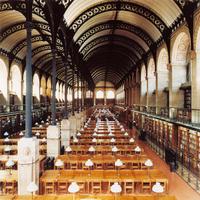

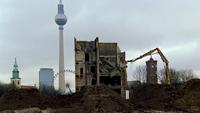
In the Room
Since Yves Klein’s 1961 intervention, numerous artists have occupied themselves with the exceptional architecture and history of Haus Lange and Haus Esters. Site-specific works have been produced for the villas by such artists as Jan Dibbets, Sol LeWitt, Richard Long, Christo and Fred Sandback. The tradition has been continued in recent years by John Baldessari, Elmgreen & Dragset, Alicja Kwade, David Reed and Jasmina Cibic, among others.
Permanently installed in the Kaiser Wilhelm Museum are the two “Artist Rooms” by Joseph Beuys featuring his important group of works Barraque d’dull odde, which the artist finalized in 1984. Johan Thorn Prikker, who taught Albers, Campendonk and Macke, had close ties to the Kaiser Wilhelm Museum since 1903. In one of the museum’s galleries, he created the monumental wall painting Lebensalter (The Ages of Life) in 1923. Yves Klein’s 1961 work Le Vide (The Void) *is still preserved in Haus Lange. The artist duo Elmgreen & Dragset likewise created a site-specific work for Haus Lange in 2017, Dark Room*, which is now permanently installed in the house’s former darkroom.
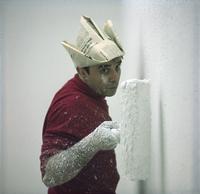
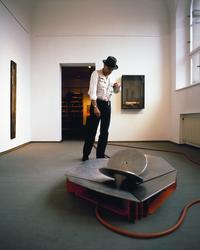
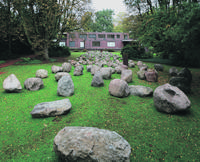
Applied Art & Design
Applied art is at the heart of the collection and now its second mainstay. The Kaiser Wilhelm Museum was originally planned as a modern museum for applied art that was intended to support local artisans by collecting and exhibition exemplary pieces of contemporary artistic design.
At the time of the museum’s opening in 1897, it was already evident that the Crefelder Museumsverein (Krefeld Museum Association) had collected older applied art objects for the new museum. Since its founding in 1883, the association above all collected furniture, porcelain and glass from the 17th to 19th century. Friedrich Deneken, the museum’s first director, concentrated on contemporary works in the Art Nouveau style and developed a particular interest in East Asian artefacts. In addition to works in the Art Nouveau style from across Europe, he acquired numerous examples of Japanese design. His successor Max Creutz was able to bring the mobile model collection of the German Werkbund, the German Museum for Art in Commerce and Industry, to Krefeld in 1923. This meant the integration of well over 2000 objects and prints by all of the most important designers from the time into the collection between 1900 and 1914. All areas of design associated with the early days of the German Werkbund are represented: photographs of modern architecture, posters, business stationary, book trade, glass, ceramics, metalwork, wallpaper and textiles. However, this major acquisition marked the end of the targeted collection of works in the field of applied art.
Since 2017, design has returned to become a renewed focus of the museum’s activities, especially contemporary design. Thanks to donations made by the major French design manufacturer Domeau & Pérès (with objects by Ronan & Erwan Bouroullec, matali crasset, Martin Szekely and Sophie Taeuber-Arp) as well as the designer Peter Ghyczy, large-scale groups of furniture, prototypes and sketches have entered the collection. It was likewise possible to acquire an ensemble of extraordinary exhibition posters by the Italian graphic designer AG Fronzoni. The significance of graphic design for the Kunstmuseen Krefeld is reflected in the institution’s new visual identity, which was developed by the internationally renowned graphic design firm of Mevis & van Deursen.

